“In Goya’s Greatest Scenes, We Seem To See”
– Lawrence Ferlinghetti, A Coney Island of the Mind
It’s taken over a century of living for poet, businessman, pioneer of performance poetry, campaigner and artist Lawrence Ferlinghetti to get his first solo exhibition of paintings in New York City.
Ferlinghetti was born in Yonkers on March 24, 1919 – during the Spanish flu pandemic – to Italian immigrants on his father’s side and Sephardic Jews on his mother’s. His father died of a heart attack before his birth, and his mother was institutionalised soon afterwards. He was raised by an aunt, notes Garrett Caples, “first in Strasbourg, France, and later in Bronxville, New York, where she abandoned him to the care of her employers, the wealthy Bisland family, who sent him to boarding school.”
He served in the U.S. Navy throughout World War II. “It was a fine war I fought,” he writes in Little Boy, “since I never fired a gun except one burst of an anti-aircraft Bofors at unseen planes lost in the clouds ten thousand feet above the Normandy beaches and later some depth charges that went off too soon and cracked all the heads on our own ship”. A transfer to to Japan and a view of of Nagasaki seven weeks after the atomic bomb (“Hands sticking out of the mud… hair sticking out of the road — a quagmire”) turned him into “an instant pacifist”.
After a spell in New York and four years in Paris, Ferlinghetti settled in San Francisco. There in 1953 he created the hallowed City Lights Bookstore – “I had in my mind to have a nice used bookstore where I could sit in the back under a green eyeshade and read all day and growl at everybody who disturbed me.” Two years later he started the counterculture City Lights imprint and its Pocket Poets Series.
The nice bookstore became a beacon of radicalism and freedom when Ferlinghetti was arrested for publishing Allen Ginsberg’s Howl. On June 3, 1957, two undercover police with the San Francisco Police Department’s Juvenile Bureau bought a copy in City Lights. Ferlinghetti was arrested for publishing obscene materials. After a lengthy trial, the judge ruled that Howl had “redeeming social importance”. It was unlikely to “deprave or corrupt readers by exciting lascivious thoughts or arousing lustful desire”. It was “not obscene.
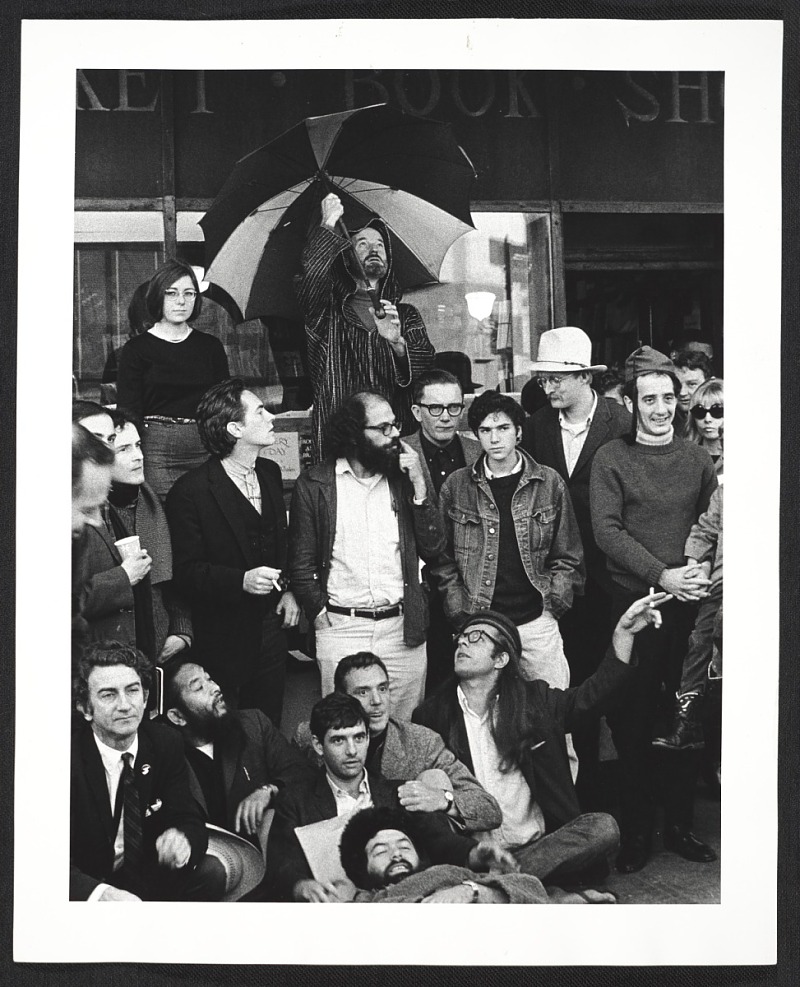
Gathering of Beat Poets, City Lights Bookstore, San Francisco, 1965 – Archives of American Art, Smithsonian Institution Washington, D.C. –
As John Yau recalls, Ferlinghetti, (who incidentally calls today’s San Francisco “an artists’ theme park without the artists”) published other landmark texts, such as Lunch Poems (1964) by Frank O’Hara and Artaud Anthology (1965), edited by Jack Hirshman. Ferlinghetti’s 1958 book A Coney Island of the Mind has sold over a million copies,
Ferlinghetti the famous poet, then, hymned for his association with Beat generation writers. And a painter of no small talent, having taken up the brush during his time in Paris. Ferlinghetti’s poems “tell little stories, make ‘pictures’,” wrote the poet and critic Jack Foley. so here are some of his pictures from 1980 to 2020.
The long-awaited show features 14 of his pictures. “I’m super happy that I’m having a show in New York,” he says, “where I started out as a poet and turned into a painter.”
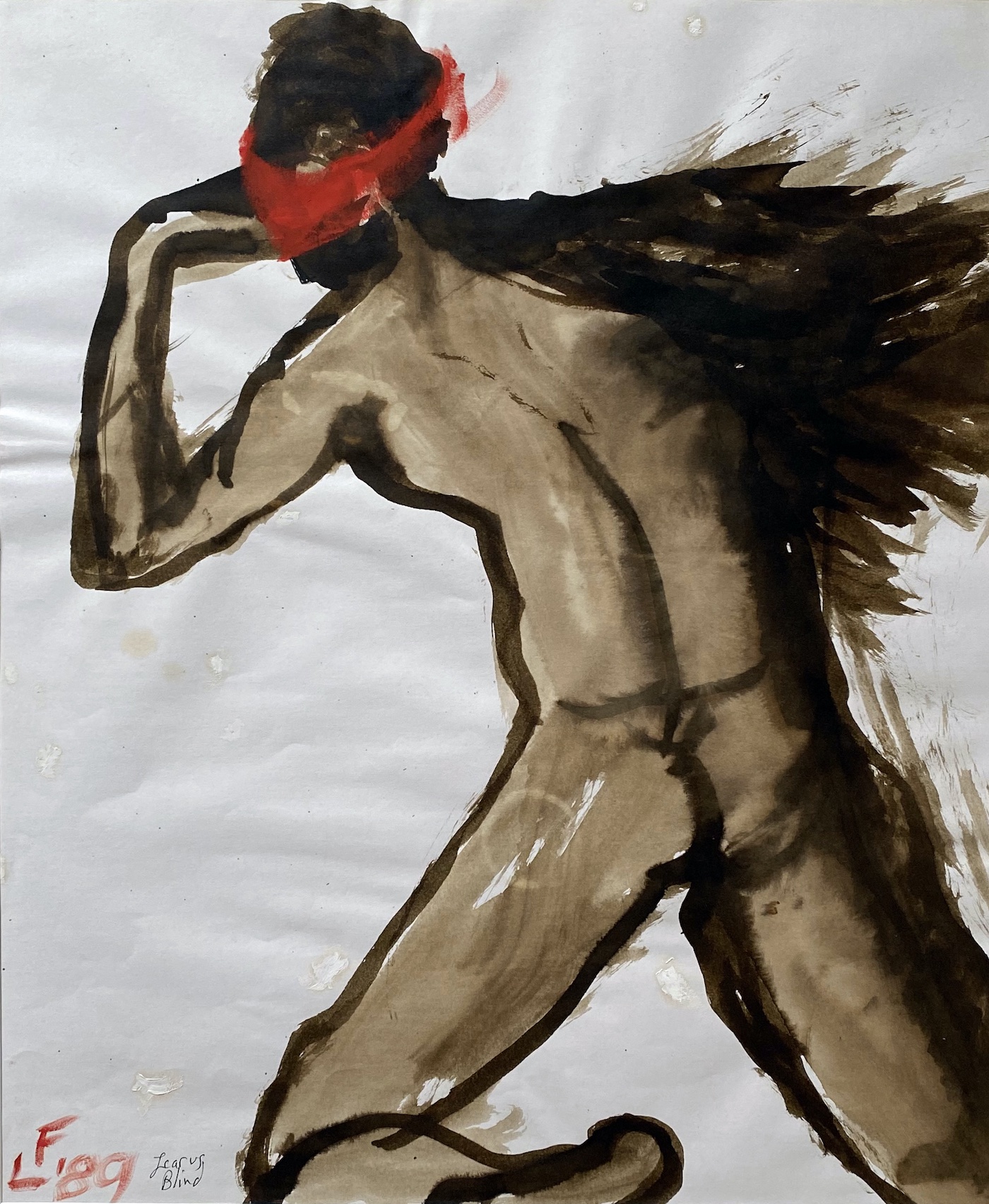
Lawrence Ferlinghetti, “Icarus Blind” (1989), acrylic, wash on paper, 22 1⁄2 x 19 inches; 29 x 24 1⁄2 inches matted (all images courtesy New Release, New York)
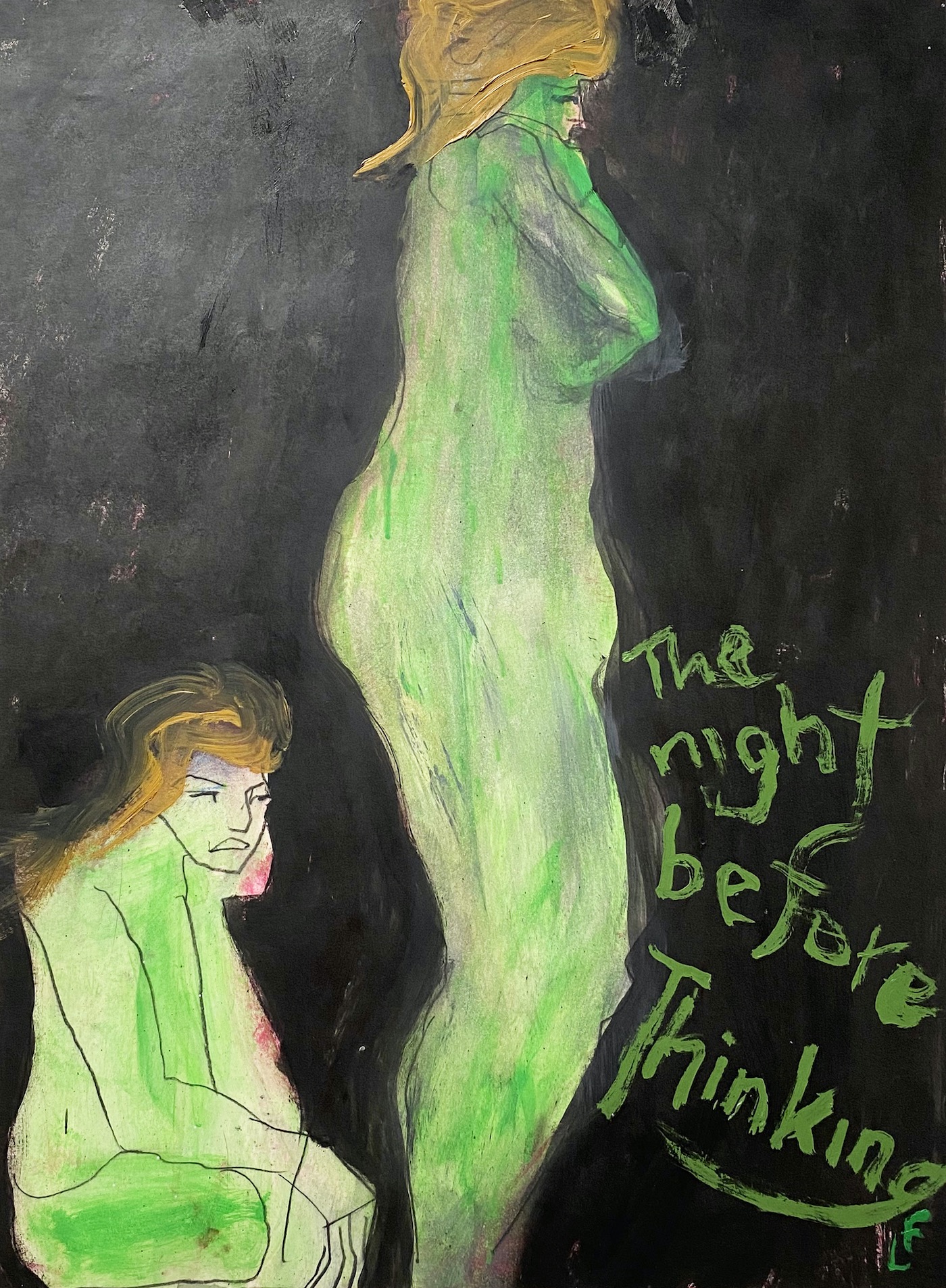
Lawrence Ferlinghetti, “The Night Before Thinking” (1990), oil paint and black conte stick on paper, 23 3⁄four x 18 inches; 30 x 24 inches
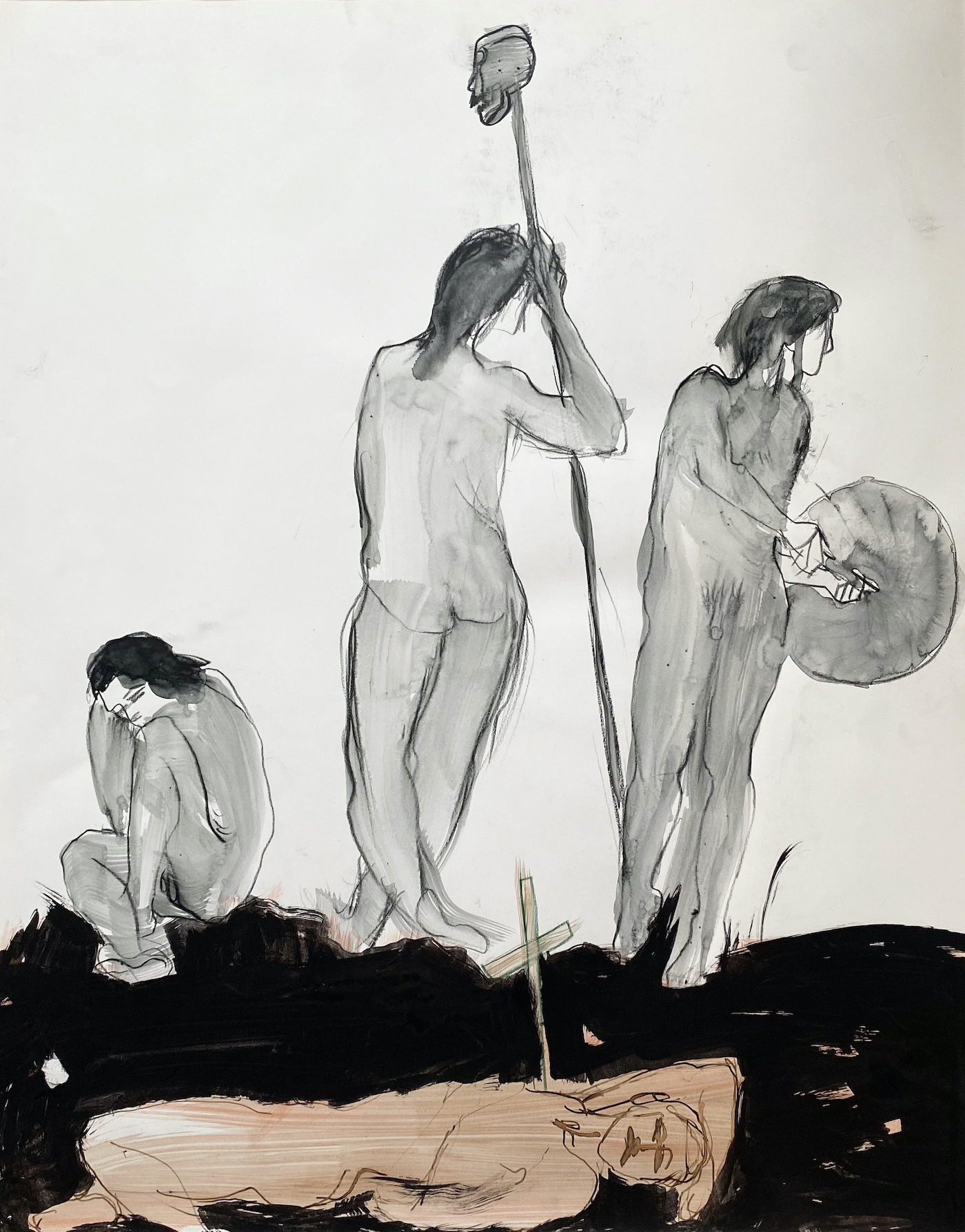
Lawrence Ferlinghetti, “Those Unrelenting Destinies” (1983), conte, colored pencil, acrylic, wash on paper, 29 x 22 1⁄2 inches; 34 1⁄2 x 28 inches matted
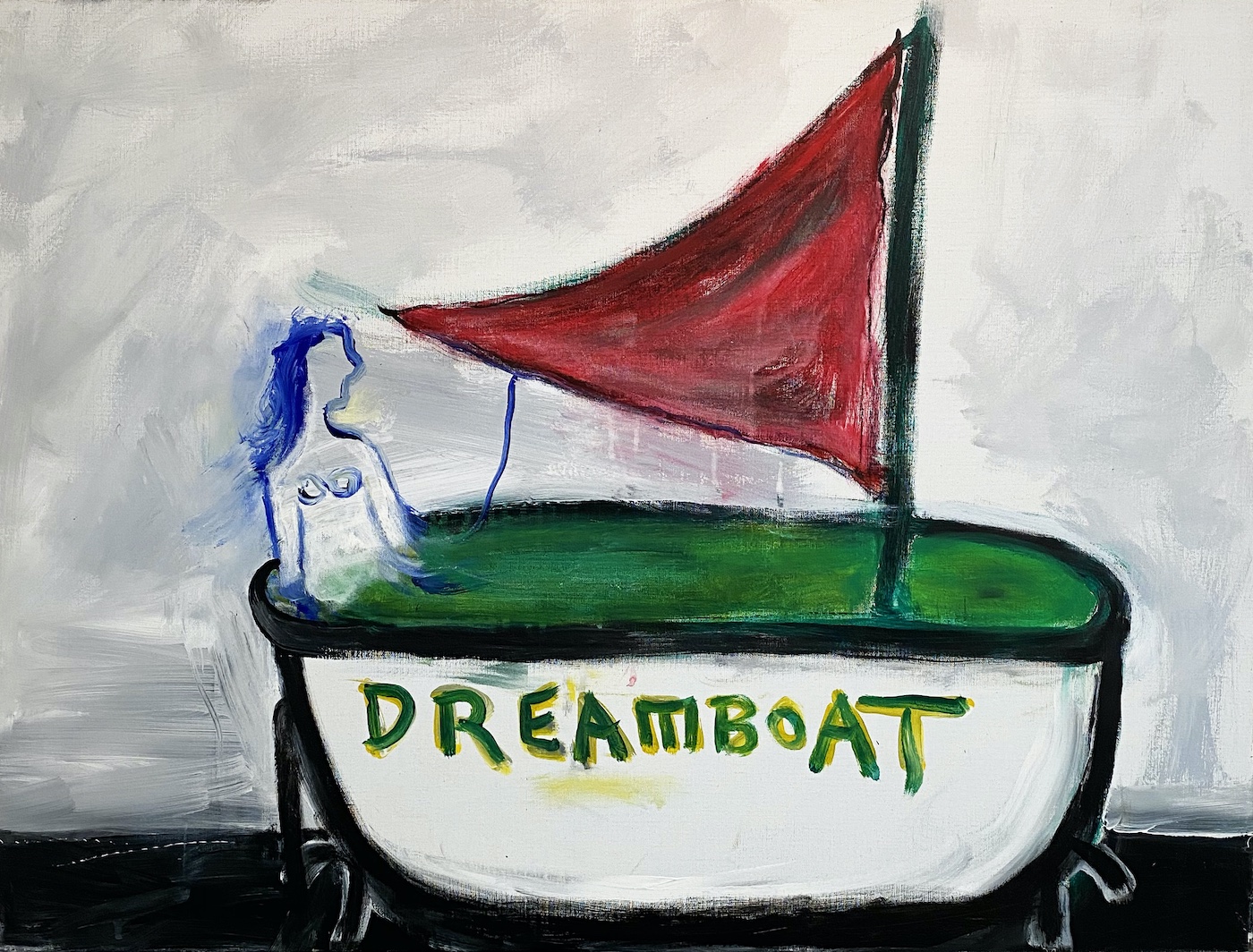
Lawrence Ferlinghetti, “Dreamboat” (2006), oil and acrylic on canvas, 30 x 40 inches
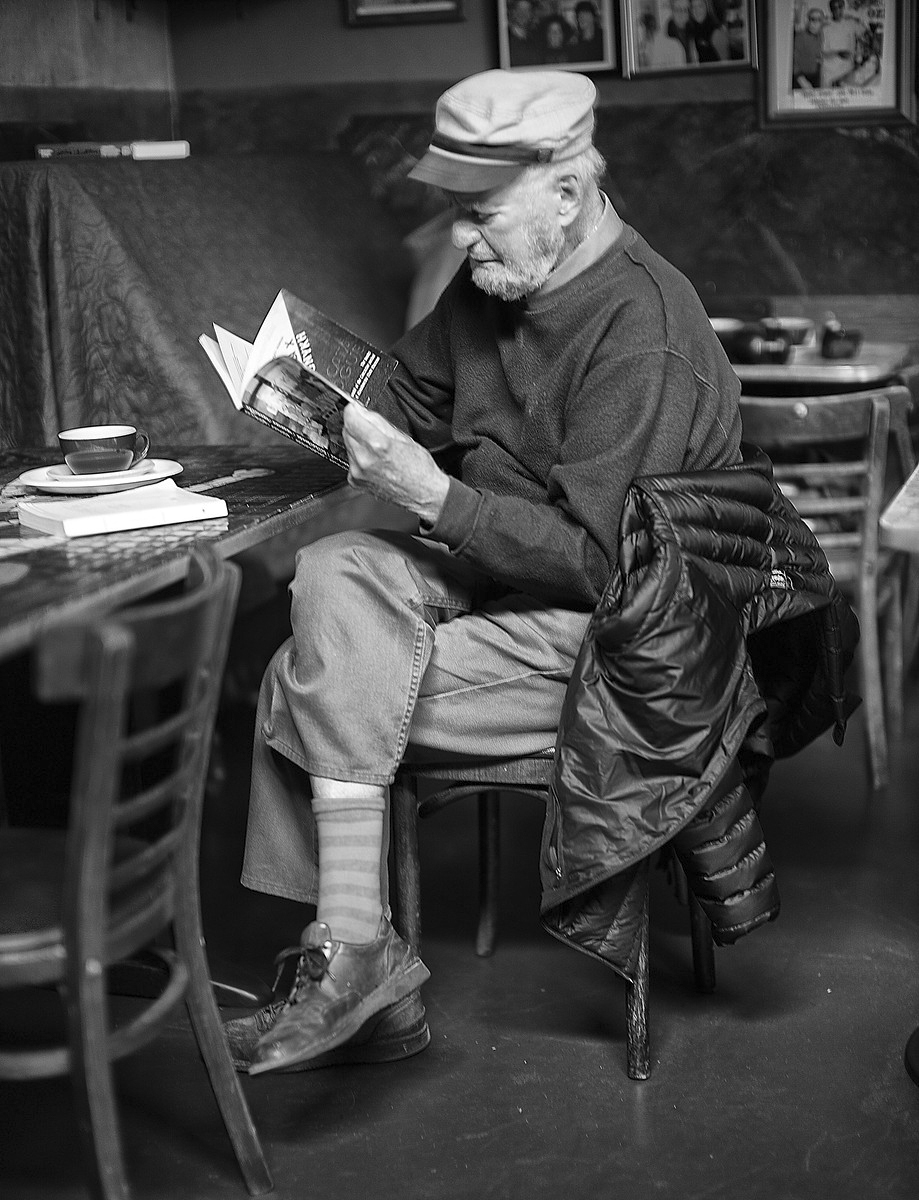
Lawrence Ferlinghetti at Caffe Trieste in 2012 by Christopher Michel.
Lawrence Ferlinghetti: Études is at New Release, 60 Mulberry Avenue, Chinatown, Manhattan, NYC.
Would you like to support Flashbak?
Please consider making a donation to our site. We don't want to rely on ads to bring you the best of visual culture. You can also support us by signing up to our Mailing List. And you can also follow us on Facebook, Instagram and Twitter. For great art and culture delivered to your door, visit our shop.









